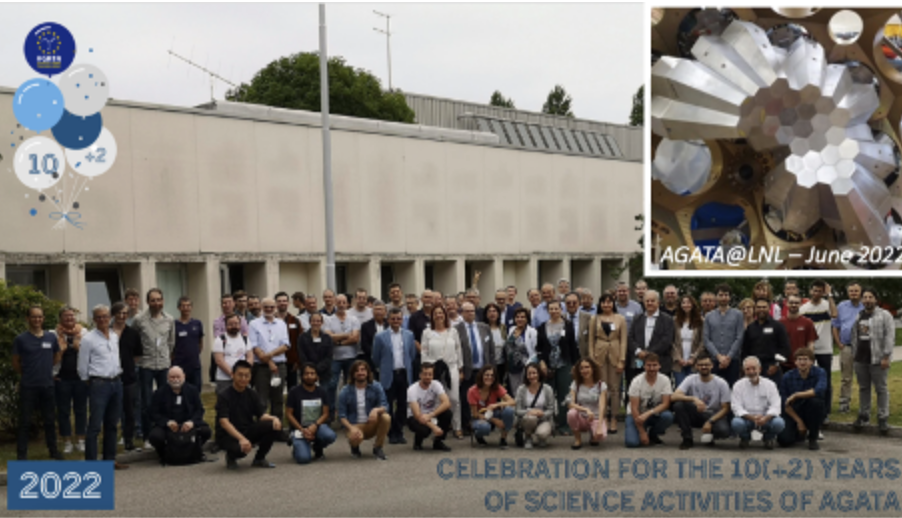
The AGATA collaboration celebrates 10(+2) years of scientific activity
Organized 2 years late due to the pandemic, the 10 year celebration of AGATA was attended by representatives of major European funding agencies, local authorities and numerous members of the AGATA collaboration, with strong participation of students and young researchers.
Based on segmented hyper-pure germanium crystals, AGATA is an innovative modular detection apparatus, which in its final version will have 180 crystals organised in triple clusters. Based on the analysis of the shape of the electrical signals provided by the detectors, the instrument makes possible to track a single gamma ray within the crystal with a spatial resolution of the order of a few millimeters.
AGATA makes possible to explore, with unparalleled efficiency and sensitivity, the structure of exotic nuclei, which drive reactions in stars and are produced in the laboratory through collisions between heavy ions.
This jewel of the technology is the result of a European collaboration of 13 countries and 40 research institutes, with Italy among the leading countries through the GAMMA group of the INFN National Scientific Commission for Nuclear Physics. AGATA's scientific adventure began at the National Laboratories of Legnaro in 2010. At that time, AGATA's first five triple clusters (the so-called Demonstrator) demonstrated the outstanding features of this revolutionary instrument through a series of pioneering experiments with stable beams. AGATA subsequently operated at the GSI Laboratory in Germany (2012-2014) and at GANIL in France (2015-2021), exploiting reactions with exotic beams and gradually growing in number of detectors. The return of AGATA and Legnaro marks the beginning of phase 2 of the apparatus construction. At Legnaro, AGATA will cover half of the solid angle and will carry out measurements with the PRISMA large-acceptance magnetic mass spectrometer, and with complementary instruments for detecting charged particles, neutrons and high-energy gamma rays, exploiting both intense stable ion beams provided by the Tandem-ALPI-PIAVE accelerator complex and radioactive beams from SPES.
Nuclear physicists of the gamma spectroscopy group of Milan University are responsible for the construction and running of the apparatus, and take active part in the science campaigns of AGATA.